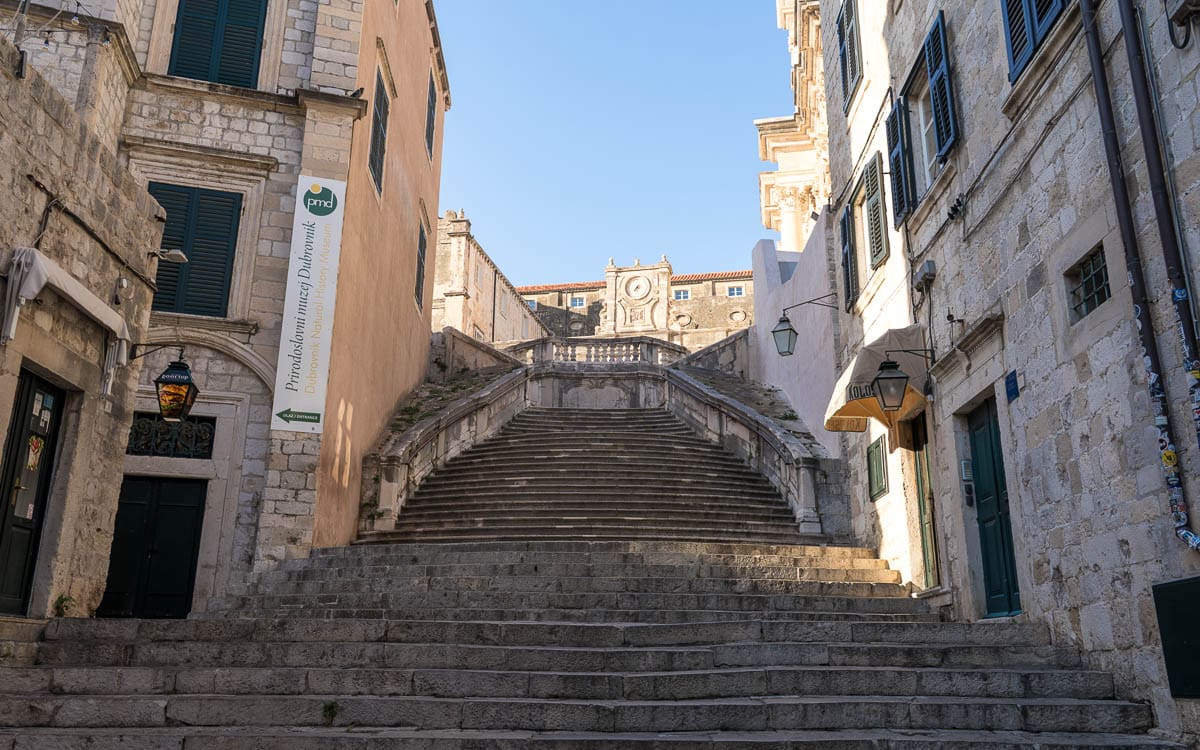
The Jesuit Stairs are a grand Baroque staircase that connects Gundulić Square to the Church of St. Ignatius in Old Town Dubrovnik, Croatia. The Church of St. Ignatius, at the top of the stairs, is an old church that once belonged to Collegium Ragusinum, a Jesuit college in Dubrovnik. The stairs are considered one of the city’s most notable examples of Baroque architecture.
Historical Beginnings & Challenges
In the mid-1600s, the Jesuits, a Catholic order focused on education and architecture, planned to build a college and church in Dubrovnik. In 1662, they sent Serafino Fabrini from Rome to help get the project started.
Unfortunately, a major earthquake hit Dubrovnik in 1667, destroying much of the city and putting the project on hold.
Baroque Revival
In 1699, the Jesuits brought in Andrea Pozzo to lead the project. He was a Baroque painter and architect known for his three-dimensional frescoes. Pozzo designed the Church of St. Ignatius of Loyola based on Il Gesù in Rome. The Jesuits completed the church in 1725.
In 1738, Pozzo completed the addition of the Jesuit Stairs, a beautiful stone staircase linking the church to the square below. The stairs, with their elegant curves and Roman design, resemble the Spanish Steps in Rome.
Gundulić Square and the Morning Market
At the bottom of the stairs is Gundulić Square, located at the southern end of the Stradun, near Dubrovnik’s Cathedral. The square is home to a morning market, popular with locals and tourists for its local snacks, souvenirs, and fresh produce from the nearby villages.
Game of Thrones
Most visitors to Dubrovnik know the Jesuit Stairs from Game of Thrones. In the famous “Walk of Shame” episode, Cersei Lannister walks naked down the stairs as if in public humiliation. The scene has made the stairs a must-visit for fans of the show.
Jesuit Stairs Information
Hours
24 hours
Admission
Free
Address
Ul. Josipa Jurja Strossmayera 2, 20000, Dubrovnik, Croatia
GPS Coordinates: 42.63961,18.10937
Map
Nearby Sights
Marin Držić Statue
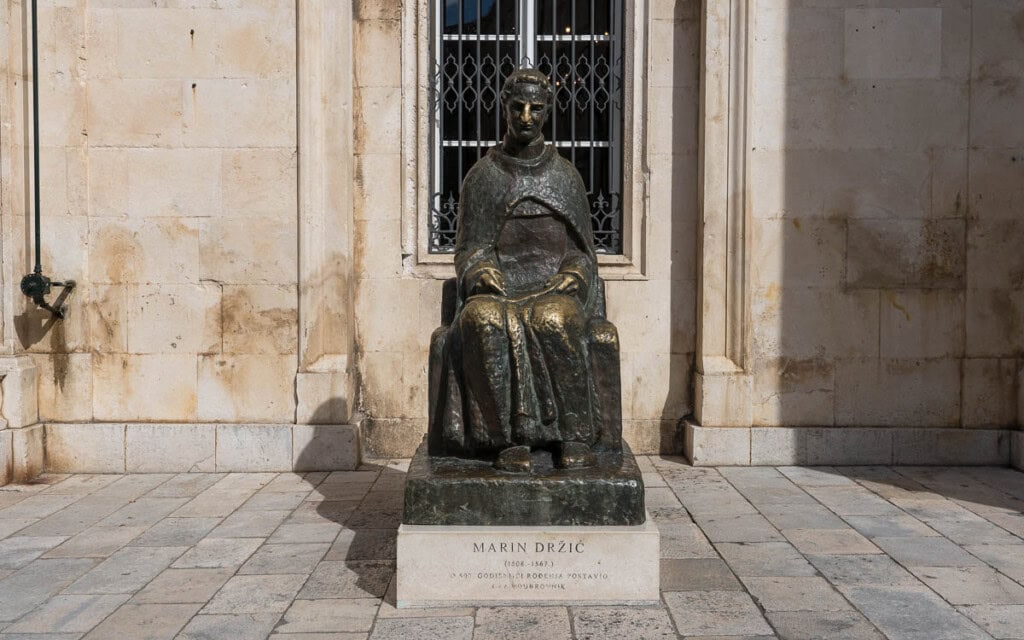
At the eastern end of the Stradun, across the street from the Church of Saint Blaise, is the bronze Marin Držić Statue. At the bottom of the seated statue is a plaque that reads "MARIN DRŽIĆ (1508-1567) - On the occasion of the 500th anniversary of his birth - City of Dubrovnik."
Church of Saint Blaise
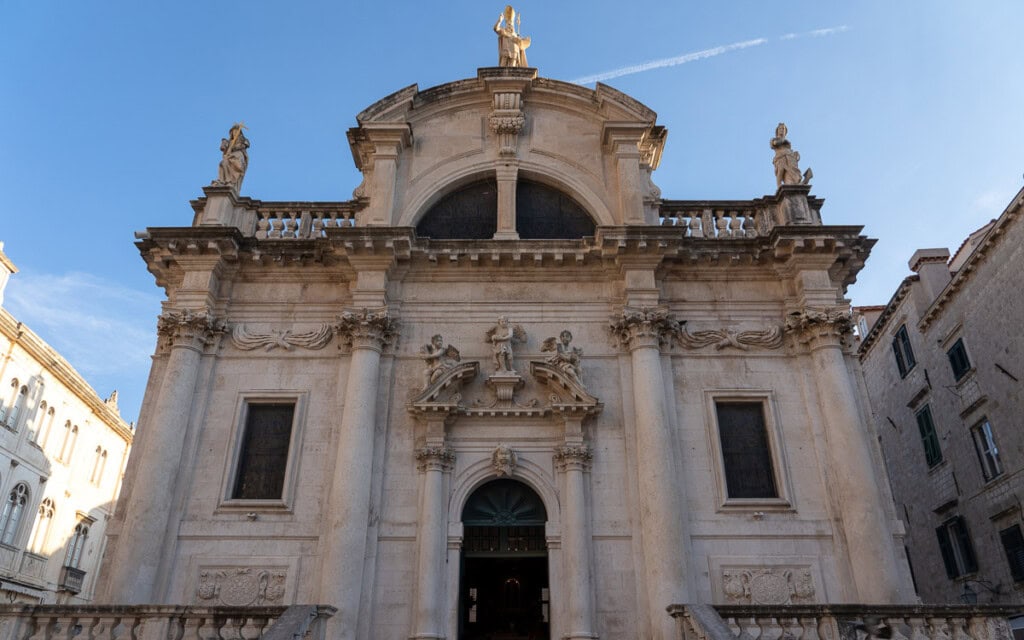
The Church of Saint Blaise, located on the eastern end of Stradun, is one of the most iconic and famous landmarks in Dubrovnik, Croatia. The church, dedicated to Saint Blaise, the patron saint of Dubrovnik, dates back to the early 18th century. A Romanesque church stood at this location from the 14th century until the middle of the 17th century.
Orlando's Column
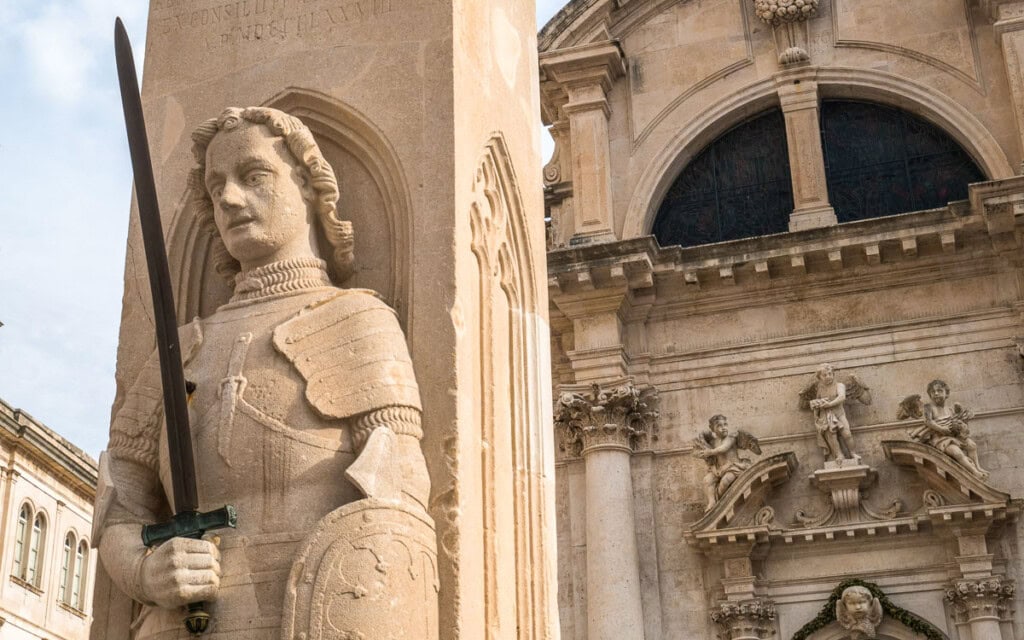
In the center of Luža Square, on the eastern end of Stradun, is Orlando's Column, a historic stone monument dating back to 1418. Carved into the statue is a heroic medieval knight who defended Dubrovnik from invaders. In 1418, Bonino di Jacopo, an Italian master sculptor from Milan, built the column with the help of local sculptor Antun Dubrovčanin.
Small Onofrio Fountain

Located at the eastern end of Stradun, off Luža Square, is the historic Small Onofrio Fountain, an ornately decorated octagonal fountain. The small fountain, often overlooked by tourists, played an essential role in the history of Dubrovnik's water supply. Italian architect Onofrio della Cava designed and constructed the fountain between 1440 and 1442.
Stradun
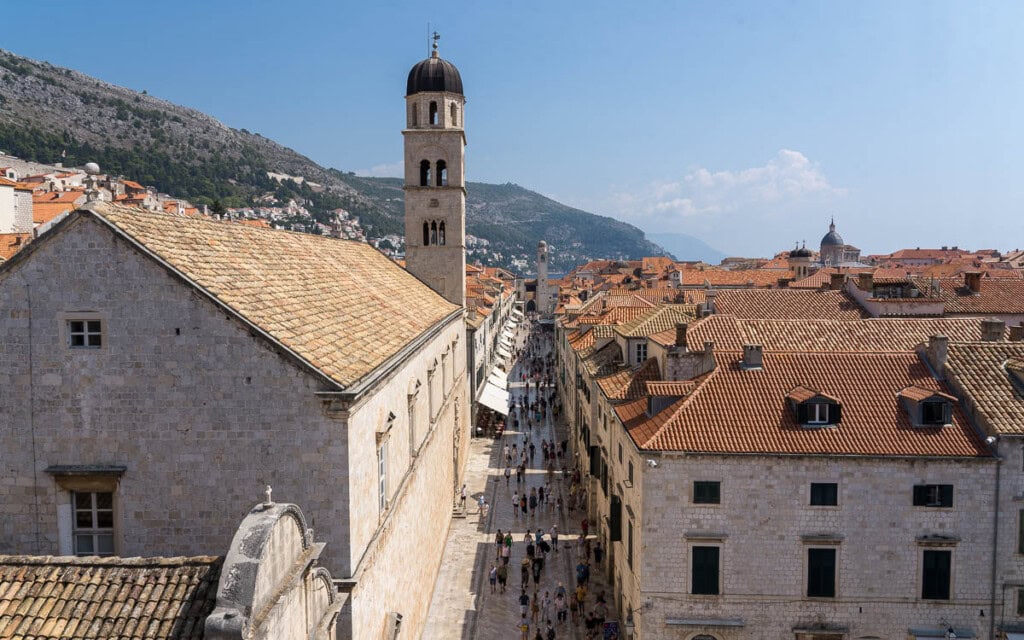
Stradun, officially Placa, is Dubrovnik's main street, stretching 300 meters from Pile Gate in the west to Luža Square in the east. Along the limestone-paved street, which cuts through the heart of Dubrovnik, are many historical sights, restaurants, bars, cafes, and shops. Along Stradun, you will find some of Dubrovnik's most important sites, including the Large Onofrio Fountain, Sponza Palace, the Church of Saint Blaise, and Dubrovnik Bell Tower.
Large Onofrio Fountain

The Large Onofrio Fountain, on Stradun near Pile Gate, is a historic circular fountain and one of Dubrovnik's most famous landmarks. For centuries, the ornate fountain has supplied water to the citizens of Dubrovnik and remains a testament to the city's architectural and engineering skills. Italian architect Onofrio della Cava designed and built the fountain between 1438 and 1440.